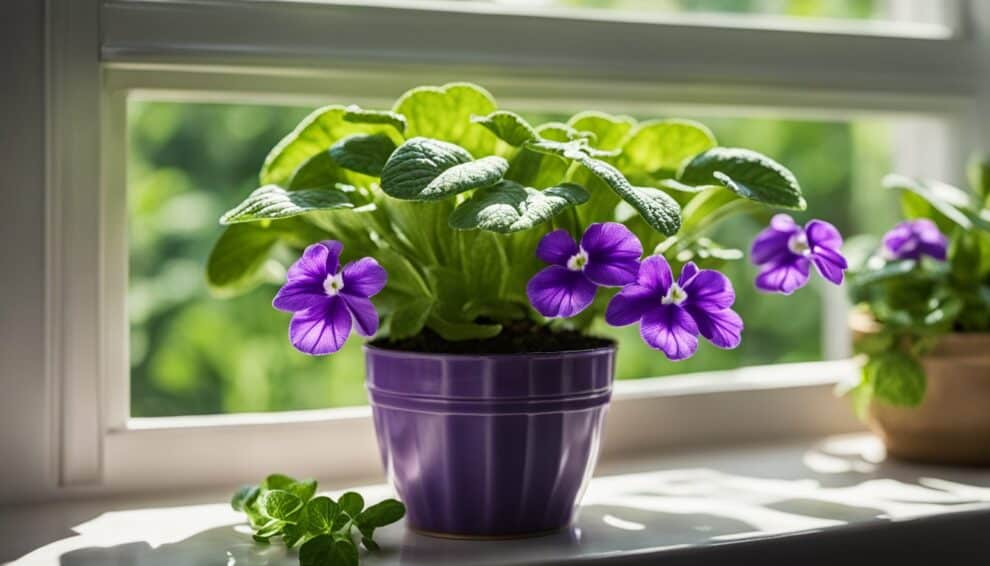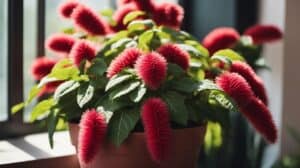Cape Primrose, also known as Streptocarpus, is a genus of flowering plants that are native to African countries such as Malawi, Tanzania, and Zimbabwe.
These plants are valued for their stunning blooms that come in various colors and patterns, making them a popular choice among indoor plant enthusiasts.
However, taking care of Cape Primrose can be a bit challenging, especially for beginners.

In this article, we will explore the wonders of Cape Primrose and provide tips on how to care for them to achieve stunning indoor blooms.
From watering and fertilizing to light and temperature requirements, we will cover everything you need to know to keep your Cape Primrose healthy and thriving.
Whether you’re a seasoned plant parent or a beginner, this article will help you unlock the beauty of Cape Primrose and enjoy their stunning blooms in your home.
Getting to Know Cape Primrose
Botanical Background
Cape Primrose, also known as Streptocarpus, is a genus of flowering plants in the family Gesneriaceae.
Native to Africa, they are popular houseplants due to their stunning blooms and easy care.
The name Streptocarpus comes from the Greek words “streptos,” meaning twisted, and “karpos,” meaning fruit, due to the plant’s twisted seed pods.
Streptocarpus plants are herbaceous perennials that grow from a rosette of leaves.
They typically have long, slender leaves that can be smooth or hairy and come in a variety of colors and patterns.
The flowers of Streptocarpus are trumpet-shaped and can be single or double blooms.
They come in a wide range of colors, including pink, purple, blue, white, and red.
Varieties and Characteristics
There are over 200 species of Streptocarpus, with many different hybrids and cultivars available. Some popular varieties include:
- Streptocarpus ‘Harlequin Blue’ – This plant has blue and white striped flowers and is known for its compact growth habit.
- Streptocarpus ‘Maestro’ – This plant has large, deep purple flowers and is a prolific bloomer.
- Streptocarpus ‘Crystal Ice’ – This plant has white flowers with a blue-purple center and is known for its long blooming period.
Streptocarpus plants prefer bright, indirect light and well-draining soil.
They should be watered regularly, but not overwatered, as the roots are prone to rot.
Fertilizer should be applied every 2-3 weeks during the growing season to promote healthy growth and blooming.
With their stunning blooms and easy care, Cape Primrose plants are a great addition to any indoor garden.
Essential Care Guide

Lighting Needs
Cape Primrose requires bright, indirect light to thrive. Place your plant near a window that receives filtered light or an area with bright, indirect light.
Direct sunlight can scorch the leaves and cause damage to the plant.
Watering Techniques
Water your Cape Primrose thoroughly, making sure the soil is moist but not waterlogged. Allow the top inch of soil to dry out before watering again.
Overwatering can lead to root rot and other problems.
Soil and Fertilization
Use well-draining soil that is rich in organic matter. A good soil mix for Cape Primrose is equal parts of peat moss, perlite, and vermiculite.
Fertilize your plant once a month during the growing season with a balanced, water-soluble fertilizer.
Temperature and Humidity
Cape Primrose prefers temperatures between 60-75°F (15-24°C) and high humidity levels.
Keep the plant away from drafts and cold temperatures, as it can damage the leaves and flowers.
To increase humidity levels, you can place a tray of water near the plant or use a humidifier.
By following these essential care guidelines, you can enjoy stunning indoor blooms from your Cape Primrose.
Propagation and Repotting

Propagation Methods
Streptocarpus can be propagated through various methods such as leaf cuttings, offsets, and seed propagation.
Leaf cuttings are the most common method of propagation and are relatively easy to do.
Simply cut a healthy leaf from the plant, trim it to about 2 inches in length, and insert it into a pot filled with moist potting soil.
Keep the soil moist and warm, and in a few weeks, new growth should appear.
Offsets, or baby plants, can be removed from the mother plant when they are big enough to handle.
Gently separate them from the mother plant and plant them in their own pots. This method is useful if you want to propagate a specific cultivar.
Seed propagation is more time-consuming but can be rewarding. Collect seeds from the mother plant and plant them in a pot filled with moist potting soil.
Keep the soil moist and warm, and in a few weeks, tiny seedlings should appear.
Repotting Steps
Streptocarpus should be repotted every year or two to ensure healthy growth and blooming. Here are the steps to follow when repotting:
- Choose a pot that is slightly larger than the current pot. Make sure the pot has drainage holes.
- Fill the pot with a well-draining potting mix.
- Gently remove the plant from its current pot and loosen the roots.
- Place the plant in the new pot and fill in any gaps with potting mix.
- Water the plant thoroughly.
It’s important not to overwater the plant after repotting, as it can lead to root rot.
Wait a few days before watering again and make sure the soil is slightly dry before watering.
By following these propagation and repotting tips, you can ensure that your Streptocarpus plant stays healthy and produces stunning indoor blooms.
Troubleshooting Common Issues

Pest Problems
Streptocarpus plants are prone to pest infestations, especially if they are grown in crowded or humid conditions.
Common pests that can affect Cape Primrose include spider mites, mealybugs, and aphids.
To prevent an infestation, it is important to keep the plant clean and well-ventilated.
If an infestation occurs, use an insecticidal soap or neem oil to control the pests.
Alternatively, you can use a cotton swab dipped in rubbing alcohol to remove individual pests.
Disease Prevention
Streptocarpus plants are susceptible to fungal and bacterial diseases, especially if they are overwatered or grown in humid conditions.
To prevent diseases, it is important to keep the plant dry and well-ventilated. Avoid watering the plant too frequently and make sure the soil is well-draining.
If you notice any signs of disease, such as yellowing leaves or black spots, remove the affected leaves and treat the plant with a fungicide.
Leaf and Flower Troubles
Streptocarpus plants can develop a range of leaf and flower problems, including yellowing leaves, brown spots, and wilting flowers.
These problems can be caused by a variety of factors, including overwatering, underwatering, poor soil quality, and pest infestations.
To troubleshoot these issues, start by examining the plant and identifying any visible problems.
Adjust the watering schedule, improve the soil quality, and treat any pests as needed.
If the problem persists, consider repotting the plant or seeking advice from a professional gardener.
Remember that Cape Primrose is a delicate plant that requires careful attention and maintenance.
With proper care, however, it can provide stunning indoor blooms that will delight any plant enthusiast.
Frequently Asked Questions

What are the best practices for indoor Streptocarpus care?
Streptocarpus requires bright but indirect light, and temperatures between 60-75°F.
Watering should be done when the top inch of soil is dry, and fertilization should be done every 2-3 weeks during the growing season.
It is also important to provide good air circulation and avoid getting water on the leaves.
How can I encourage my Streptocarpus to produce more blooms?
Deadheading spent flowers and providing adequate light and water can encourage Streptocarpus to produce more blooms.
Additionally, fertilizing with a high phosphorus fertilizer can promote blooming.
What is the difference between Streptocarpella and Streptocarpus?
Streptocarpella is a genus of plants closely related to Streptocarpus, but with smaller and more delicate flowers.
Streptocarpella also prefers cooler temperatures and higher humidity than Streptocarpus.
Can you provide tips for propagating Cape Primrose?
Streptocarpus can be propagated by leaf cuttings or division. Leaf cuttings should be taken from healthy leaves and placed in a moist growing medium.
Division should be done when the plant has outgrown its container and involves separating the plant into smaller sections.
What steps are involved in growing Streptocarpus from seed?
Growing Streptocarpus from seed involves sowing the seeds on the surface of a moist growing medium and covering with plastic to maintain humidity.
Once the seeds have germinated, the plastic can be removed and the seedlings can be transplanted into individual pots.
Why isn’t my Streptocarpella blooming and how can I fix it?
Streptocarpella may not bloom if it is not receiving enough light or if the temperature is too warm.
Providing more light or moving the plant to a cooler location may help encourage blooming.
Additionally, fertilizing with a high phosphorus fertilizer can promote blooming.














